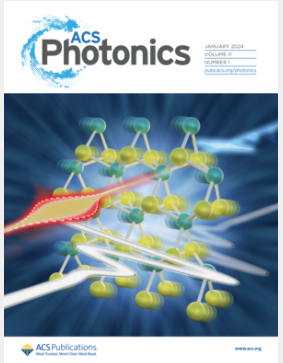High-Performance Electron Transport in CsPbBr3 Perovskite Crystals for Room-Temperature Radiation Detection
IF 6.5
1区 物理与天体物理
Q1 MATERIALS SCIENCE, MULTIDISCIPLINARY
引用次数: 0
Abstract
All-inorganic CsPbBr3 perovskite material has gained considerable attention in recent years for its unique properties, including exceptional room-temperature semiconductor behavior for hard radiation detection. This semiconductor has achieved record-breaking energy resolutions in room-temperature gamma-ray detection. Despite the high energy resolutions achieved, performance in CsPbBr3 detectors has primarily relied on hole collection due to the lower likelihood of hole trapping in halide perovskites, leaving the potential of electron transport largely underexplored. In this study, we explore the electron transport properties of Bridgman-grown CsPbBr3 crystals with thicknesses below 2 mm. Remarkably, we demonstrate high spectral performance using electron collection, achieving energy resolutions of 2.5% for 137Cs (662 keV), 4.2% for 57Co (122 keV), and 7.8% for 241Am (59.5 keV). These results are comparable to those obtained via hole collection. The mobility–lifetime (μ·τ) product value for electrons reached ∼1.03 × 10–3 cm2/V. Furthermore, mobilities estimated through pulse rise time analysis yielded similar values of ∼27 cm2/(V s) for both electrons and holes. This work provides the first systematic evidence that electron collection is viable in thin CsPbBr3 detectors, highlighting their potential for use in high-performance radiation detection by electron collection.

CsPbBr3钙钛矿晶体中用于室温辐射探测的高性能电子输运
近年来,全无机CsPbBr3钙钛矿材料因其独特的性能(包括用于硬辐射探测的特殊室温半导体性能)而受到广泛关注。这种半导体在室温伽马射线探测中实现了破纪录的能量分辨率。尽管实现了高能量分辨率,但由于卤化物钙钛矿中空穴捕获的可能性较低,CsPbBr3探测器的性能主要依赖于空穴收集,这使得电子传输的潜力在很大程度上未得到充分开发。在这项研究中,我们探索了厚度小于2 mm的bridgman生长CsPbBr3晶体的电子传输特性。值得注意的是,我们通过电子收集展示了高光谱性能,137Cs (662 keV)的能量分辨率为2.5%,57Co (122 keV)的能量分辨率为4.2%,241Am (59.5 keV)的能量分辨率为7.8%。这些结果与通过井眼收集获得的结果相当。电子的迁移寿命(μ·τ)积值达到了~ 1.03 × 10-3 cm2/V。此外,通过脉冲上升时间分析估计的电子和空穴的迁移率也得到了类似的值~ 27 cm2/(V s)。这项工作提供了第一个系统的证据,证明电子收集在薄CsPbBr3探测器中是可行的,突出了它们在通过电子收集进行高性能辐射探测方面的潜力。
本文章由计算机程序翻译,如有差异,请以英文原文为准。
求助全文
约1分钟内获得全文
求助全文
来源期刊

ACS Photonics
NANOSCIENCE & NANOTECHNOLOGY-MATERIALS SCIENCE, MULTIDISCIPLINARY
CiteScore
11.90
自引率
5.70%
发文量
438
审稿时长
2.3 months
期刊介绍:
Published as soon as accepted and summarized in monthly issues, ACS Photonics will publish Research Articles, Letters, Perspectives, and Reviews, to encompass the full scope of published research in this field.
 求助内容:
求助内容: 应助结果提醒方式:
应助结果提醒方式:


